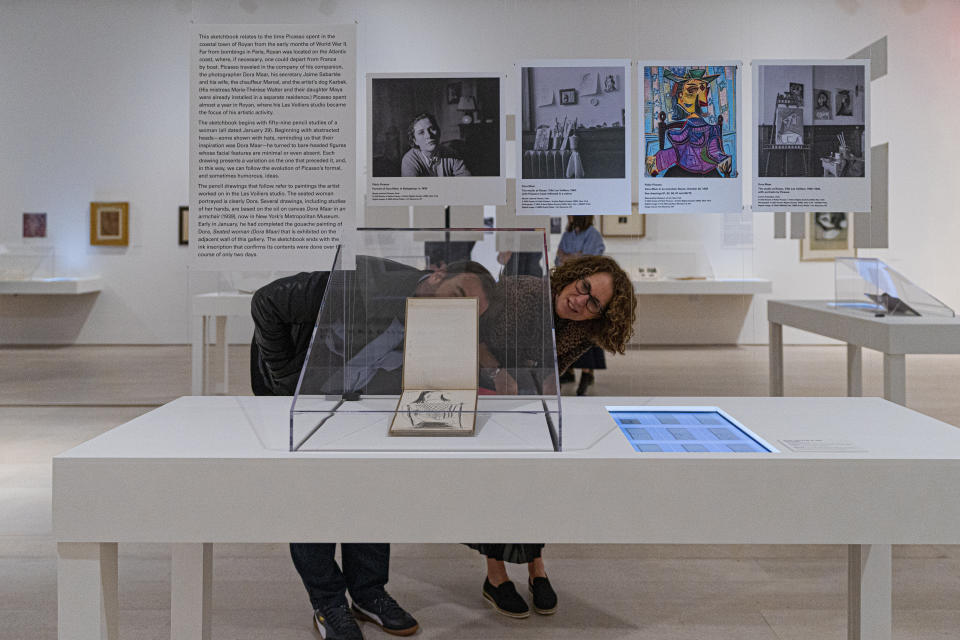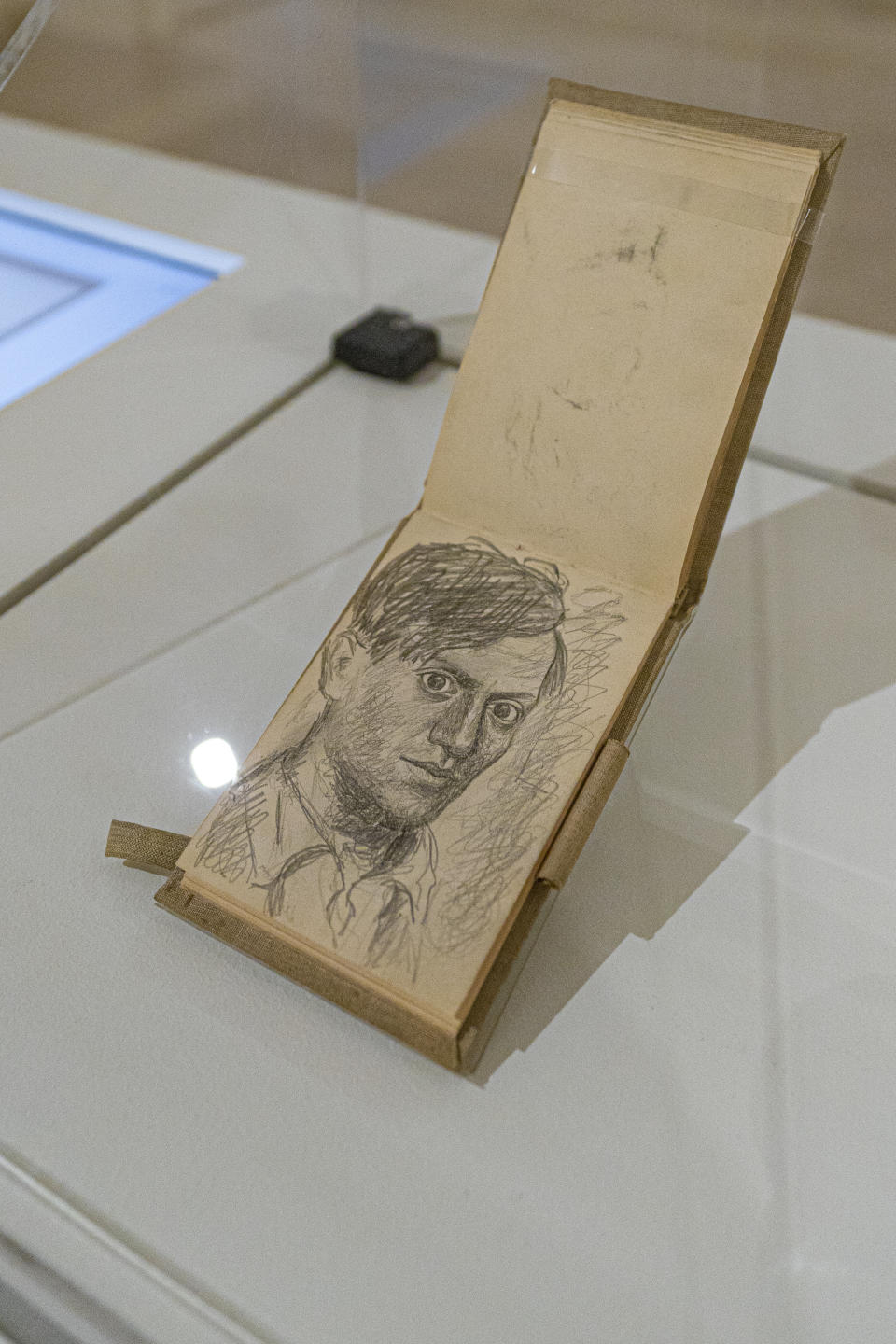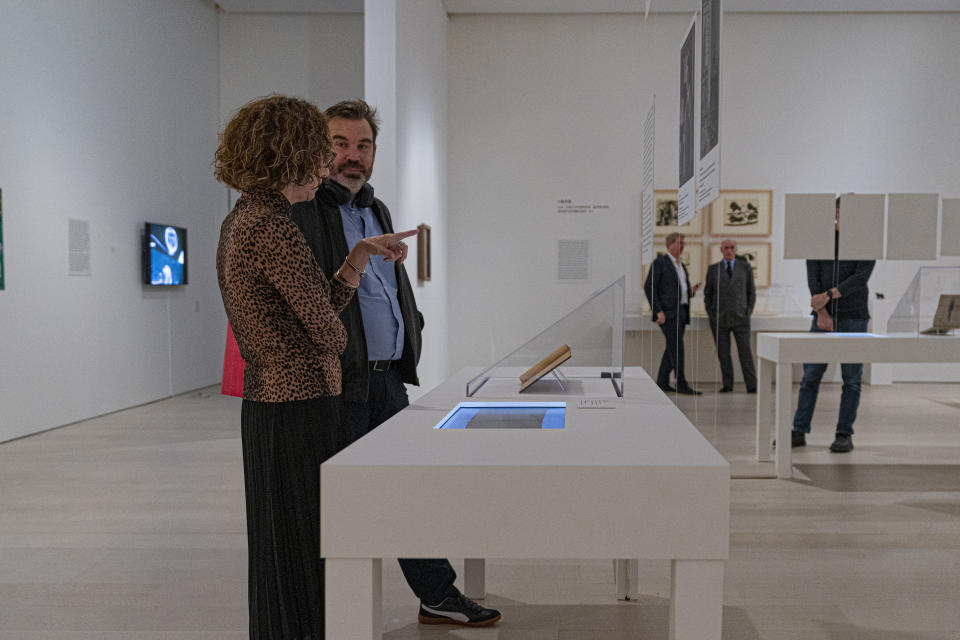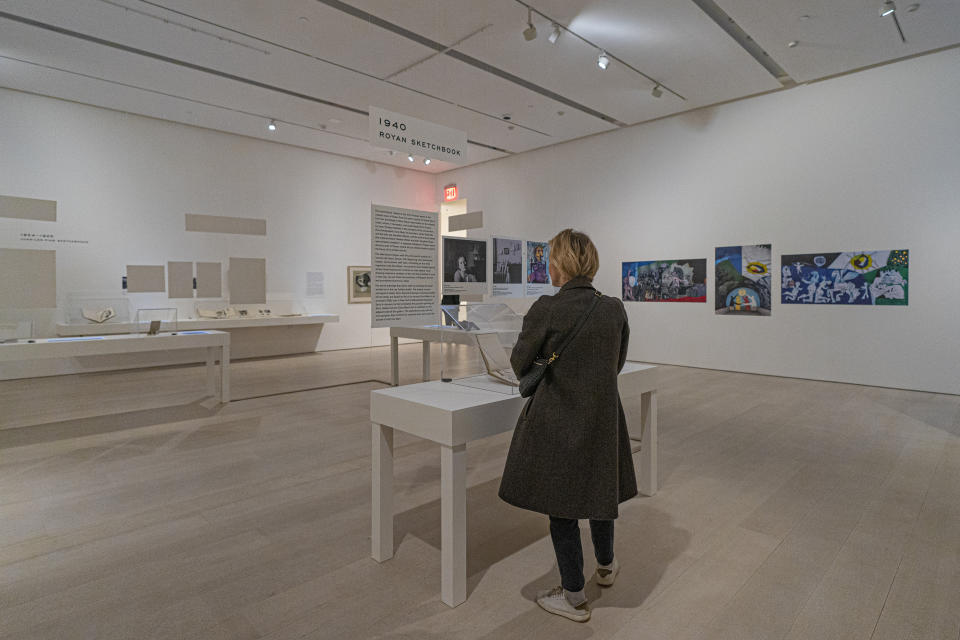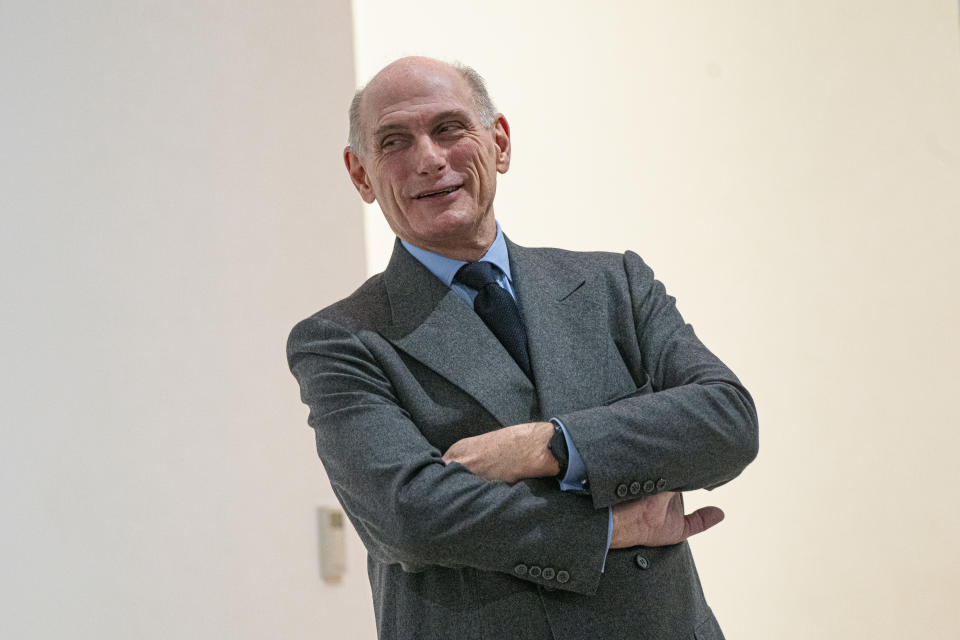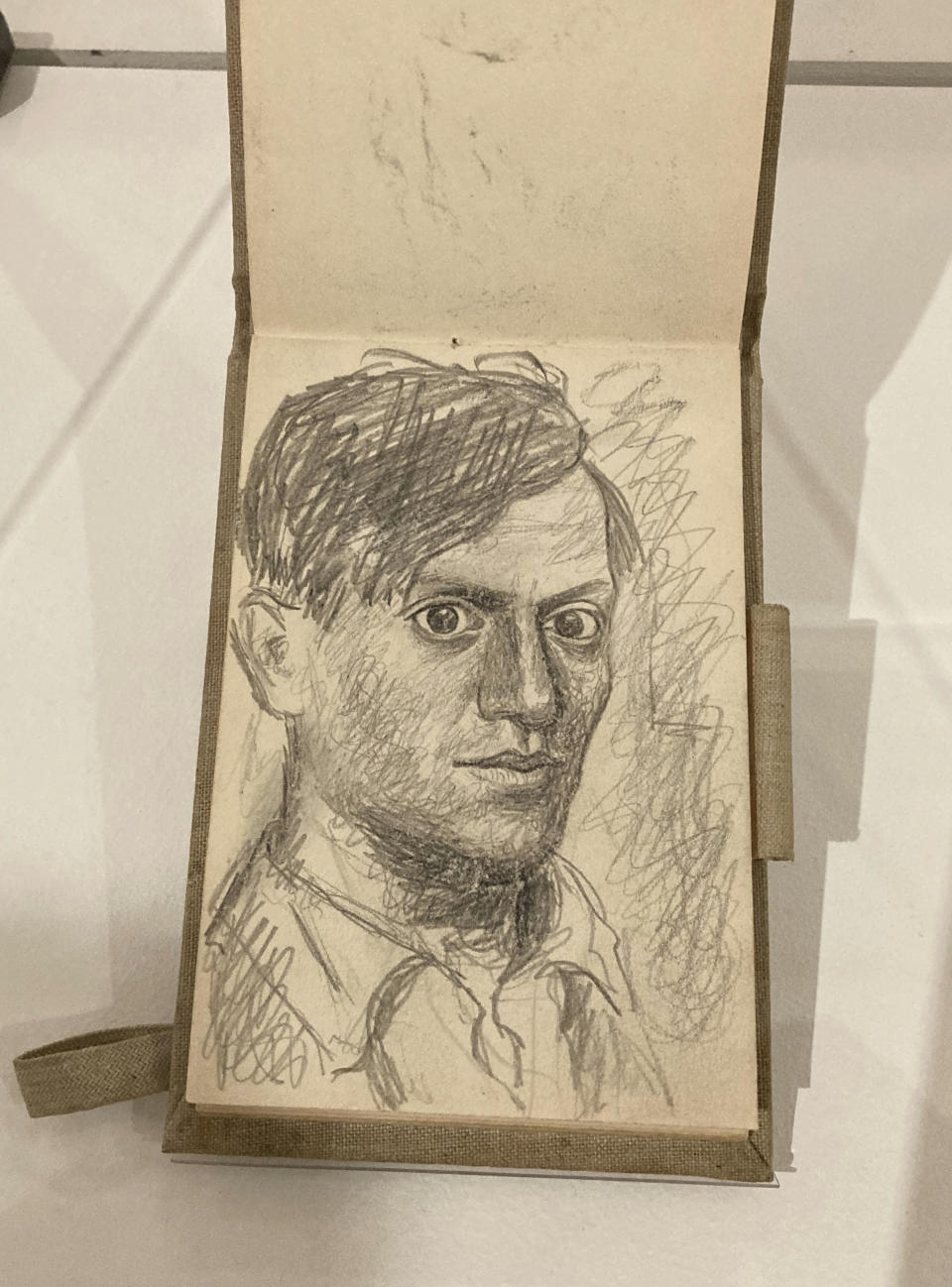Even Picasso had to practice, practice: Sketchbooks on display show whimsy, humor, determination
- Oops!Something went wrong.Please try again later.
- Oops!Something went wrong.Please try again later.
- Oops!Something went wrong.Please try again later.
NEW YORK (AP) — He was a giant of 20th-century art, but that doesn’t mean Pablo Picasso needed a big canvas.
Matchbook covers, postcards, restaurant napkins — they all served as makeshift sketchpads for the artist at moments of inspiration.
And so it should perhaps not be surprising that some of Picasso’s actual sketchpads were well smaller than, say, a compact disc cover — like the tiny one now on display at Manhattan’s Pace Gallery as part of “Picasso: 14 Sketchbooks,” a new exhibit marking 50 years since the legendary artist’s death.
A stunningly complete self-portrait in pencil peeks out of that little book, with deep and piercing eyes, all 3 ¾ by 5 ½ inches of it. It was 1918 and Picasso, then in his mid-30s, had just married ballet dancer Olga Khokhlova. During a summer in balmy Biarritz, he painted on canvas but also kept this tiny notebook around, filling it with scenes of their villa, the beach and the town, and sketches of upcoming paintings. He also drafted a letter to his wife’s doctor and listed addresses of friends.
The exhibit, which opened Friday, is a collaboration with the Madrid foundation run by a grandson of Picasso’s, Bernard Ruiz-Picasso. It comes nearly 40 years after the gallery’s initial 1986 show of Picasso sketchbooks, called “Je Suis le Cahier (I am the Sketchbook)" after a notation Picasso made on one of his pads — which subsequently toured the globe.
The show comes at a busy time for Picasso developments — even in New York this very week, where the artist’s famed 1932 “Femme à la montre” (“Woman with a Watch”), portraying his muse Marie-Thérèse Walter, sold for $139.4 million at Sotheby’s on Wednesday evening, making it the second most valuable Picasso ever sold at auction.
“He is the greatest artist of the modern period, and in many ways he thought of himself as a sketchbook,” said Pace CEO Marc Glimcher, speaking to a crowd at a preview Thursday, referring to Picasso’s efforts to refine his work through copious sketching.
He sounded almost evangelical when he urged the young people present to recognize that “everyone in this room sees the world differently because of Pablo Picasso.”
In an interview, Glimcher explained that he feels the world needs to be reminded of Picasso’s achievements at a time in our culture where, he said, it seems everything and everyone is being questioned anew. He also noted what he called the icon effect: “When something becomes so iconic it becomes by necessity oversimplified,” he said. “People say, ‘Oh, Picasso, got it.’ We have to make sure they DO get it.”
The show, in one large gallery, is organized chronologically, spanning the years 1900-1959, most of Picasso’s career (he died in 1973). Each of the 14 sketchbooks is presented in context with what was going on in his life — including in his romantic relationships, which figured so prominently in his artwork.
Many of the sketches are early versions of famed paintings like “Les Demoiselles d’Avignon” (1907), for which one sketchbook tests out various figure renderings; “Dora Maar in an Armchair” (1939); and his “War and Peace” murals, for a chapel in southern France, that were finished in 1952.
There is also a film of Picasso, shirtless and in shorts, preparing for those giant murals, needing a ladder to reach the top of his canvas — and reminding us of the dimension of some of his masterworks.
But elsewhere in the show, the gems are in miniature size. Some of the images are fanciful, like the monsters and clownlike figures, some in bright blue and red pencil, from a 1956-1957 sketchbook that resembles a whimsical children’s book.
Others feel precise and more technical like the ink drawings in his Juan-les-Pins sketchbooks, from 1924, in which he experiments with shapes of guitars and other objects through patterns of dots and lines, known as “constellations.” A long poem also appears in one of the sketchbooks, translated in an accompanying catalog.
With each sketchbook open to only one page, how to uncover the rest? The gallery’s solution is to provide subsequent pages in video displays on a loop.
Ruiz-Picasso, the artist's grandson and son of Paul Picasso, said the sketchbooks deserve a fresh look because much has happened in the past few decades in terms of research into Picasso's work and the context in which it was produced.
“We have better information now about what he was doing,” Ruiz-Picasso said in an interview. “It’s a kind of archaeological dimension, where we can go more deeply."
Ruiz-Picasso, who was 13 when his grandfather died, remembers children not being entirely welcome in the studio where the artist painted in Mougins, France, where he lived out his later years. But elsewhere in the home, he remembers him always sketching “until the last piece of paper available.”
“He was permanently doing something,” Ruiz-Picasso said.
The Pace Gallery show runs until December 22.
.

